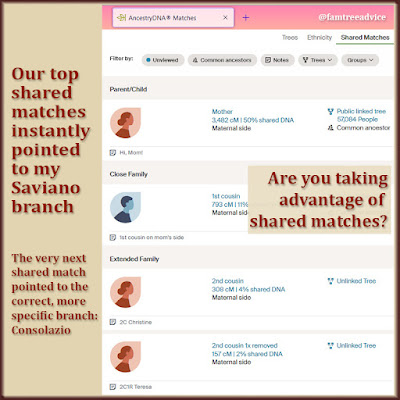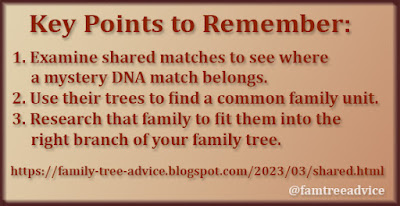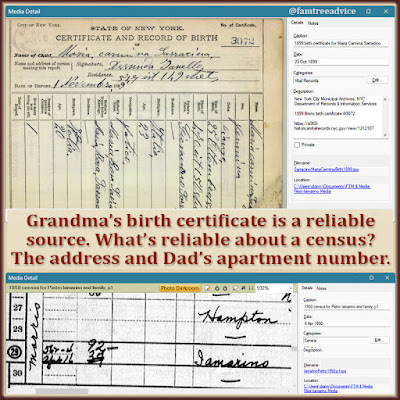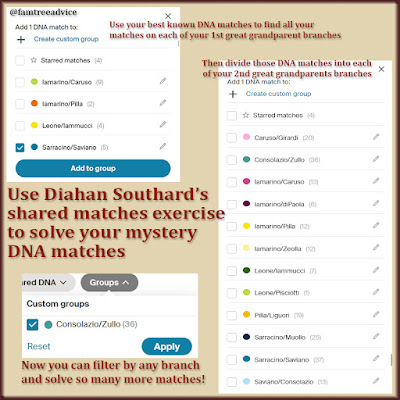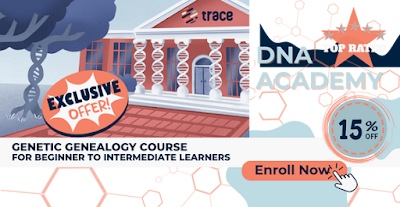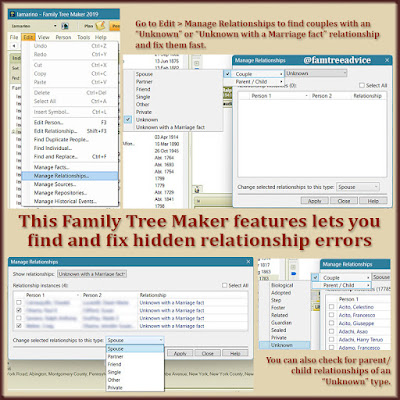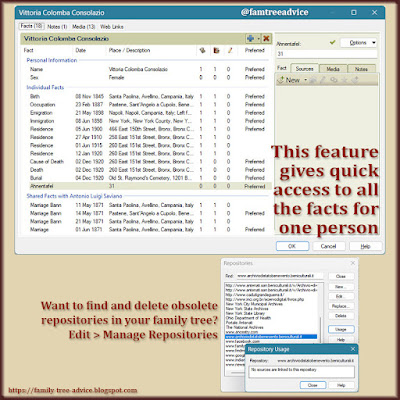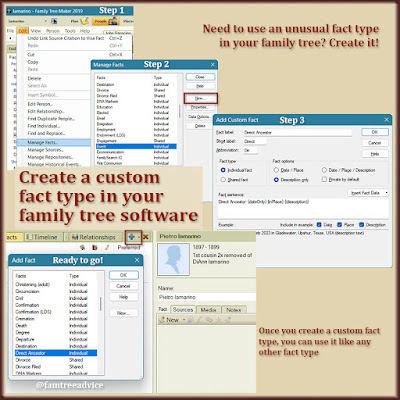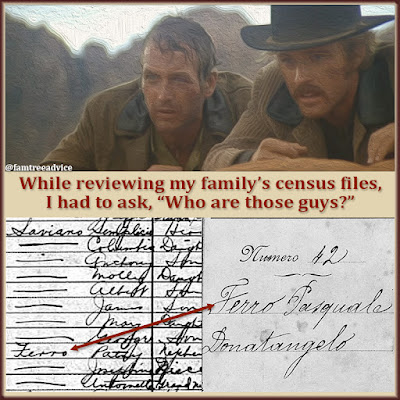Discovering where my 2nd great grandmother was born was a genealogy victory. No one else in my extended family knew about this town. They only knew that some ancestors came from somewhere in Avellino, Italy. I'm the one who gave it a name: Santa Paolina in the province of Avellino.
In a nutshell, here's how I discovered her hometown:
- Her eldest son's U.S. WWII draft registration card said he was born in Tufo, Avellino (find out more). I searched that town's vital records.
- The records told me his mother's family came from nearby Santa Paolina. I searched that town's vital records.
- There I found my 2nd great grandparents' 1871 marriage documents and my 2nd great grandmother's 1845 birth record. Victory!
 |
| Building my 3rd great grandmother's family tree from AWFUL documents required a helpful tool. |
Once I knew the town, I could research my family. I used the Antenati website to build several generations of her Consolazio family. (That name itself was a recent discovery.) But my 3rd great grandmother who married a Consolazio had no relatives in Santa Paolina. Where did she come from?
Her 1898 death record from Santa Paolina had the answer. She was born in another town called Apice. I don't know how Rufina, my 3rd great grandmother, met her husband when their towns are 10 miles apart. Back then, transportation involved mules or horses and 10 miles seemed very far.
A Tough Challenge
This got me excited to explore the vital records from Apice. Then I got a look at those vital records! The town of Apice has some of the worst vital records I've ever seen. The handwriting is atrocious, and I swear the clerk routinely left letters out of names. Amazingly, I did identify Rufina's ancestors, including all 8 of her great grandparents. They are my 6th great grandparents, all born in the early 1700s.
Chasing down all those names was a challenge, and I may have some of the last names spelled wrong. But my family tree mission is to connect as many people as possible from my ancestral hometowns. I'd like to piece together a lot more Apice families. It's the horrible handwriting that slows me down.
The other night I forced myself to go through all 112 Apice birth records for 1816, the year Rufina was born. I'd already downloaded the files to my computer, so my goal was to rename each file, making them searchable. It was torture. I had to guess at many last names. I hope that other documents, written by a better clerk, will make the family names clearer. Literally.
A Helpful Research Tool
When I first tried to tackle the Apice documents, I created a companion file as an aid. Someday this town's last names will be as familiar to me as those from my grandfathers' hometowns. But until then, my companion document is a necessity.
My document is an Excel file, which makes alphabetizing a snap. But you can use a text file or Word document, too. Here's all it contains:
- Name. I record my best guess for every last name I see. As I review more records, I check what I think I see against what I recorded in my spreadsheet.
- Alternate. It's typical to see variations in Italian names, particularly in the prefix or final letter. Giannini/Giannino, deMarco/diMarco. I make note of variations to assure myself I've seen this before.
- Cognomix results. That refers to an Italian last-name website that tells you where in Italy you'll find a particular last name. Whenever I add a name to the spreadsheet, I check this resource to see if the name exists in Apice or in towns nearby. It's reassuring to find the name still in Apice because then I know I'm spelling it right. I can also consult the Italian White Pages online to see if the name is in the area.
You'll need another type of resource for names that aren't from Italy, of course. Consider censuses for your town, directories, and newspaper articles.
 |
| Don't give up when the town scribe had the worst handwriting imaginable. |
One last thing I did in this spreadsheet is a bit of color-coding:
- A green background in the name field means I'm pretty confident about the spelling.
- Red text in the Cognomix results field confirms the name still exists in that town today.
You can find lots of help online for deciphering bad handwriting. (Go to the FamilySearch Wiki and search for the word handwriting.) You can compare letters from the word you can't quite understand to similar shapes on the same page. Can you confirm that the first letter is a capital P? Do some of the letters match a word you can read because of its context?
But last names can be a big problem. It helps so much if you get familiar with the language. For instance, I know a last name in Italy won't start with a W or contain a K.
Here's how you can overcome the worst handwriting in your genealogy research:
- Get familiar with last names from the place you're researching.
- Get in-language handwriting tips from FamilySearch.org.
- Use directories and other tools to see if what you think is a name is actually a name.
- Keep a log (like my spreadsheet) while reviewing documents from a particular place.
I can't go back further than my 6th great grandparents from Apice unless the town's church records go online. But I want to keep exploring the town and find links to any DNA matches. This spreadsheet is critical to my research. Will it help you, too?



